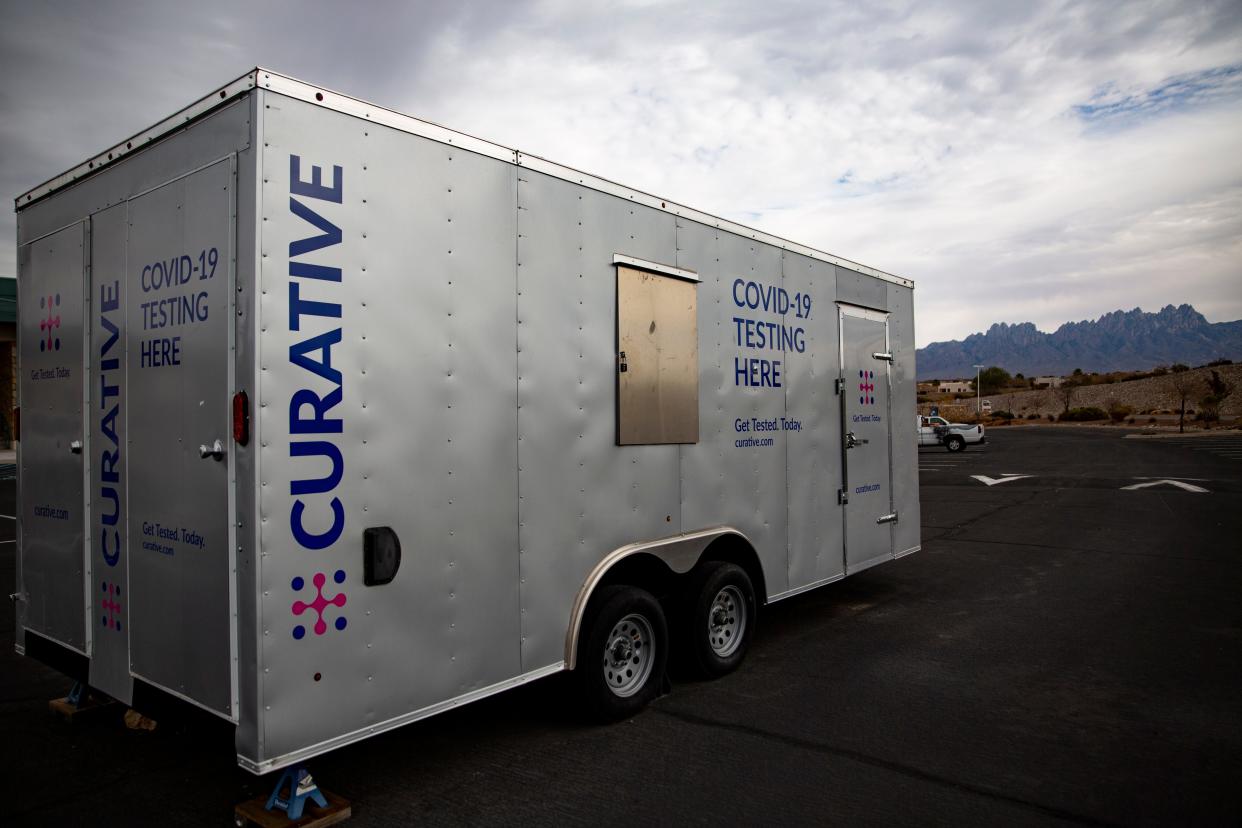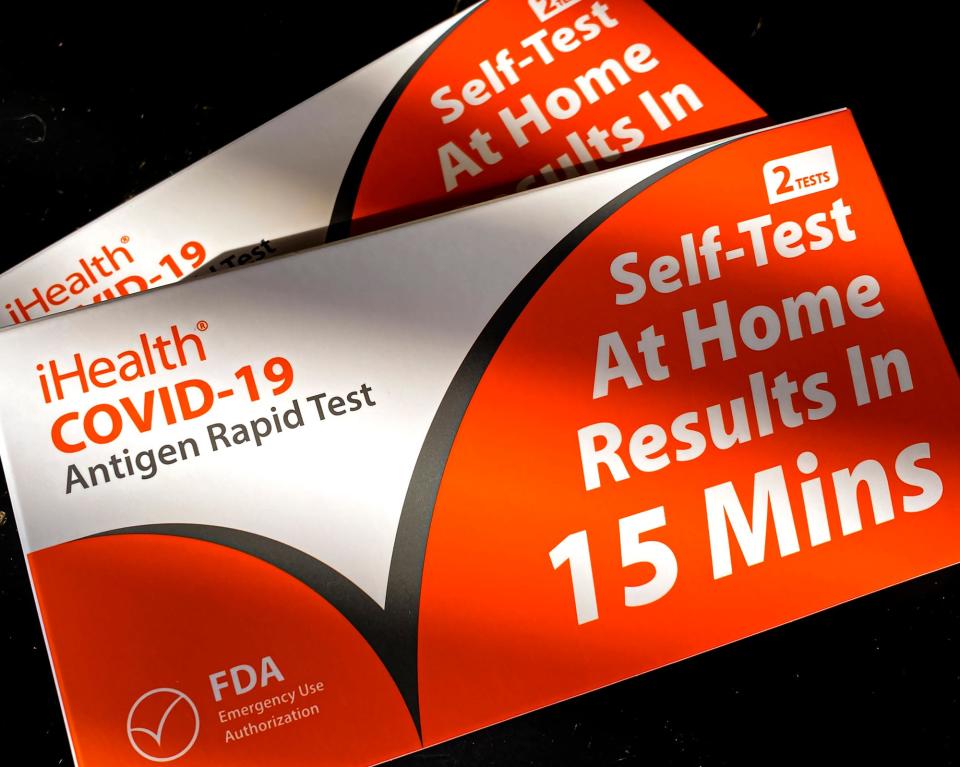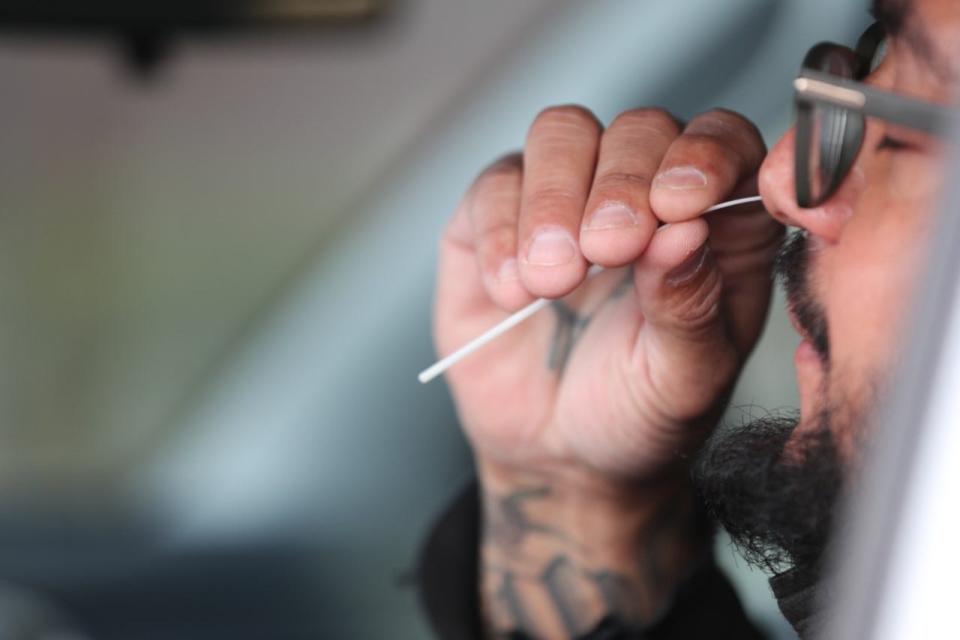New Mexico doing away with some COVID-19 PCR test sites, but community health advocates pushing state to keep them

- Oops!Something went wrong.Please try again later.
This story was first published by Source New Mexico.
New Mexico is preparing to no longer provide easily available, community-wide, free diagnostic testing for COVID, worrying community health advocates that it could affect New Mexicans’ ability to get treatment.
KUNM reports Curative PCR test sites around the state and the country will close by the end of December, ending reliable access to fast and accurate test results and treatment options.
Six days later, state officials announced on Thursday “the state will only provide free, at-home testing going forward,” and will work with local governments to hand out 1 million free at-home tests from the Centers for Disease Control and Prevention.
Free PCR testing going away means many New Mexicans having to resort to using free at-home tests and will delay care simply waiting. They’re waiting to get an accurate result, waiting to get a prescription, and then waiting to get that prescription filled.
Experts have pointed out a PCR test is the best way to find out if you have COVID in the event you are experiencing symptoms or you have been exposed to someone who tested positive.
A PCR test takes the molecules of the cells inside the SARS-CoV-2 virus and multiplies the sample to a point where a technician can tell what was in the sample, said Rafael Rubio, president of Albuquerque-based medical technology company NetMedical.
“So if you have a teeny tiny bit of virus. It can amplify to the point where it’s like, ‘Hey, that thing that’s growing inside you right now, that’s SARS-CoV-2,’” Rubio said.
That process is where the test gets its name: reverse transcription-polymerase chain reaction (PCR).
PCR tests detect it earlier in the course of infection after exposure than the less sensitive rapid antigen test, Dr. Albert Ko, the Raj and Indra Nooyi Professor of Public Health at the Yale School of Public Health, told CNN.
But on Thursday, New Mexico’s Acting Health Secretary Dr. David Scrase said he does not see PCR testing as a necessary tool.
Scrase presented data showing you have to take two or three at-home tests in order to get the most accurate result, and those at-home tests are the most accurate at three days after the onset of symptoms.
The FDA recommends spacing out rapid tests at least 48 hours apart.
Paxlovid must be taken within five days of developing symptoms for it to reduce your risk of getting hospitalized with COVID, and to reduce your risk of developing Long COVID.
“You’re talking about a five-day window for doing the job of what PCR could have done in a single test,” Rael said. “If the FDA is saying that you’ve got three tests across five days, then you really might miss your window for the Paxlovid prescription.”
But Scrase said this will not impact New Mexicans’ ability to get Paxlovid treatment on time. Having a test that’s 10% more accurate but 10 times harder to reach is not better than a less accurate test that gives results in 15 minutes, he said.
Scrase said most of his patients go through the entire process “in one or two days at the most.”
“I don’t think we’re unnecessarily introducing a huge delay that’s gonna delay care,” Scrase said. “I actually think we’re setting ourselves up for success, because of the wide ability and access of home testing to virtually everyone, as opposed to having to get a ride and transportation, or to have someone help you get to a place to get a PCR test.”
Curative was offering two-hour PCRs and one-day PCRs, said Roberta Rael, director and founder of Generation Justice.
“The folks I work with keep saying that they keep on taking the antigen test, and it’s not coming through, but they’re super sick, they have all of the symptoms,” Rael said. “They’re not getting the Paxlovid if they do need it.”
There is also concern about people not knowing how to get a good sample using a home test. If you don’t get a good sample, you’re not going to get a good test result, Rael said.

“There’s less and less education, and all of the different tests that I have at home, and that I buy for folks, all have different instructions,” Rael said.
Scrase said people should carefully read the instructions to determine if a test requires you to swab one nostril or two, and how far to put the swab into your nose. To get an adequate sample with an at-home test, “you have to be uncomfortable,” Scrase said.
Petition to keep PCR going
After northern New Mexico resident Luis Peña started asking around about where to get his children tested for COVID, he started a petition to state health officials, as a request to extend safety measures to an underserved area.
He said this is absolutely the worst time to be taking away a layer of testing.
“Don’t take this away in the middle of the flu season,” he said. “I know they’re gonna take it away eventually, it’s just a matter of time, but it’s like, don’t do it now, and don’t do it under the cloak of the holidays when everyone’s getting into vacation mode and their guard is down.”
Rael asked Scrase if there is another option for PCR tests the public should be aware of and can send their loved ones to as they need them.
Scrase said most hospitals in New Mexico offer PCR testing, and told the public to ask local laboratories like TriCore Reference Labs, Southwest Laboratories, or SED Medical Laboratories.
Peña acknowledged he could still get a PCR test at an urgent care or a hospital, but the difference is there is social distancing at the Curative sites, and in some cases they are outdoors.

“Versus, you know, I got to go to the emergency room, or urgent care, and there’s tons of people there, man, I could get COVID just going to get the dang test,” he said.
Marquel Musgrave (Nambé) is the COVID Technical Assistance Specialist for the National Indigenous Women’s Resource Center. They heavily rely on data to support and communicate with tribal communities across the U.S. about the impacts and reality of COVID.
“When we remove testing tools, it not only impacts rates of COVID, but it removes the data, which is critical in order for us to assess risk, and to communicate to the public the level of risk,” they said.
Musgrave urges New Mexicans to support the petition, advocate for tools of access like PCR testing in New Mexico, and support the collective health of their communities right now, especially when the entire state other than one county is experiencing high transmission.
Let’s use the tools we have
Everybody either knows somebody, or has somebody in their home who has been sick with either the flu, COVID, or RSV, or multiple ones at one time, Musgrave said.
“We still don’t have a mask mandate, even though the CDC has recommended masking with this level of transmission, and we’re impacted by incredibly severe cases of RSV,” they said.
Young people did so much to protect elderly folks at the beginning of the pandemic, they said, and now they are the ones being most impacted.
“They really did so much for their grandparents, and for who they were around, and right now, we need to support them, because they’re the most impacted right now,” Musgrave said. “How are we protecting our children? What policies do we have to reduce transmission? What tools do we have? Let’s put those to use.”
More health news:
'We all still take this very hard': COVID’s lasting effects, from a funeral home attendant
Wash your hands: Fall and winter viruses active in lower Rio Grande region
Austin Fisher is a reporter for Source New Mexico.
This article originally appeared on Las Cruces Sun-News: New Mexico says its doing away COVID-19 PCR test sites, but community health advocates are pushing state to keep them

